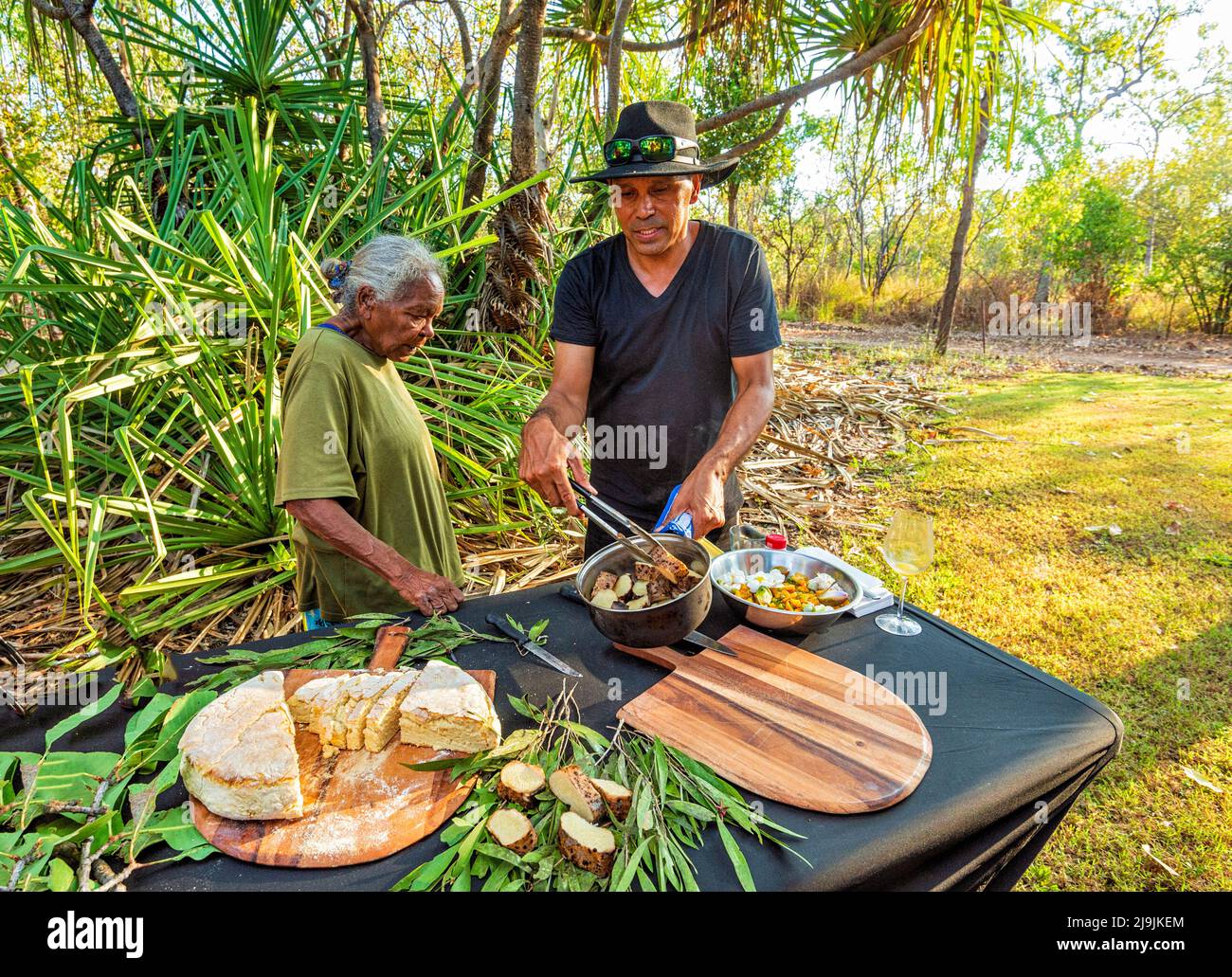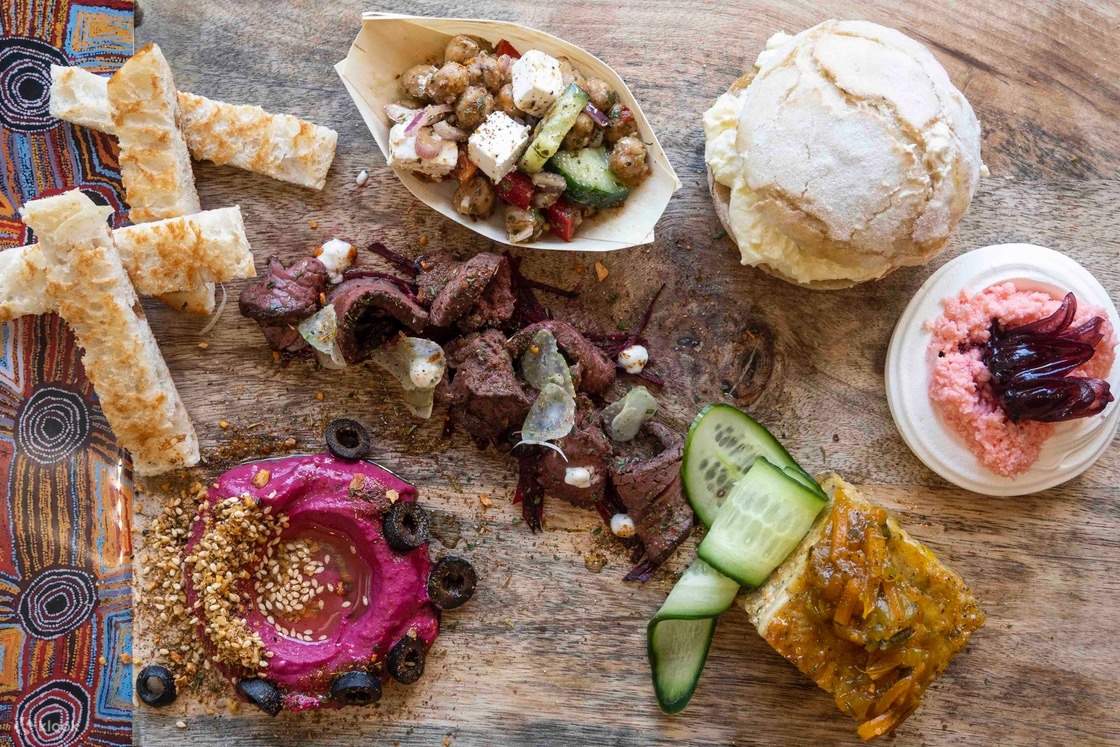
A Taste of the Land: Exploring Native Australian Food Festivals
Australia, a continent as vast as it is ancient, boasts a culinary heritage as rich and diverse as its landscapes. For millennia, Indigenous Australians have expertly harvested and prepared a unique array of native ingredients, a tradition that is now experiencing a vibrant resurgence. This revival is beautifully showcased through a growing number of Native Australian Food Festivals, events that not only tantalize the taste buds but also educate, celebrate, and connect communities with the deep cultural significance of these extraordinary foods.
These festivals are more than just markets selling delicious treats; they are immersive experiences. They offer a rare opportunity to sample ingredients that have sustained Aboriginal and Torres Strait Islander peoples for tens of thousands of years, many of which are only now gaining wider recognition and appreciation. From the sweet, tangy burst of finger limes to the earthy richness of quandongs, and the distinctive aroma of bush tomatoes, these festivals provide a sensory journey into the heart of Australia’s original pantry.
The Essence of Native Australian Cuisine

Before delving into the festivals themselves, it’s crucial to understand the essence of native Australian food. This cuisine is intrinsically linked to the land and its seasons. It is a testament to sustainability, resilience, and an intimate understanding of the environment. Indigenous Australians possess an unparalleled knowledge of which plants are edible, how to prepare them to unlock their nutritional value and flavor, and when and where to harvest them responsibly.
Key native ingredients often featured at these festivals include:
- Bush Tucker: A broad term encompassing a wide variety of edible plants, including fruits, nuts, seeds, roots, and leaves. Examples include Wattleseed, with its coffee and chocolate notes; Quandong, a tart desert peach; Kakadu Plum, one of the richest natural sources of Vitamin C; and Bush Tomato, offering a tangy, slightly sweet flavor.
- Native Fruits: Beyond those mentioned, think of the vibrant Finger Lime, with its caviar-like pulp; the sweet and floral Lilly Pilly; and the juicy Davidson Plum.
- Native Herbs and Spices: Lemon Myrtle, with its intense lemon aroma and flavor; Saltbush, adding a salty, herbaceous note; and Native Pepper, providing a peppery warmth.
- Native Proteins: While often less prominent at consumer-focused festivals due to accessibility and ethical considerations, dishes may also incorporate Kangaroo, Emu, Crocodile, and various native fish and shellfish, prepared using traditional methods.

The preparation methods are equally significant, often involving slow cooking, smoking, pit roasting, and utilizing natural elements like hot stones and ash. These techniques not only cook the food but also impart unique flavors and textures.
The Rise of Native Australian Food Festivals
The increasing popularity of Native Australian Food Festivals reflects a broader societal shift. There’s a growing awareness of the importance of Indigenous culture, a desire for unique and sustainable food experiences, and a recognition of the health benefits offered by many native ingredients. These festivals serve as vital platforms for:
- Cultural Preservation and Education: They provide a space for Indigenous chefs, elders, and knowledge keepers to share their culinary traditions, stories, and the cultural significance of native foods. Visitors learn about the deep connection between Indigenous Australians and their land, understanding that food is not just sustenance but also a vital part of identity and heritage.
- Economic Empowerment: These festivals offer a direct market for Indigenous producers, farmers, and small businesses specializing in native ingredients and bush tucker products. This fosters economic independence and supports the continuation of traditional practices.
- Culinary Innovation: While rooted in tradition, native ingredients are also inspiring a new generation of chefs. Festivals often feature demonstrations and tasting plates where contemporary chefs creatively incorporate native flavors into modern dishes, showcasing their versatility and potential.
- Community Connection: These events bring people together, fostering dialogue and understanding between Indigenous and non-Indigenous Australians. They create a shared space for celebration and appreciation of Australia’s unique food heritage.
- Promoting Sustainability: Native ingredients are inherently sustainable, often requiring less water and fewer pesticides than introduced species. Festivals highlight these benefits, encouraging consumers to explore more eco-friendly food choices.
What to Expect at a Native Australian Food Festival
Attending a Native Australian Food Festival is a multi-sensory adventure. Here’s a glimpse of what you might encounter:
- Tasting Stalls: The heart of any food festival, these stalls offer an incredible array of dishes. You might find kangaroo burgers with quandong relish, emu skewers with bush tomato salsa, wattleseed damper (a traditional unleavened bread), finger lime infused desserts, and refreshing drinks made with native fruits.
- Cooking Demonstrations: Watch skilled Indigenous chefs and food experts prepare traditional and contemporary dishes. Learn about specific ingredients, preparation techniques, and the stories behind the recipes.
- Workshops: Some festivals offer hands-on workshops where you can learn to identify, harvest (responsibly, of course), and prepare native ingredients yourself.
- Art and Craft Markets: Often intertwined with food, you’ll find stalls selling beautiful Indigenous art, crafts, and products, many inspired by the natural world and its bounty.
- Cultural Performances: Music, dance, and storytelling performances are common, providing a deeper understanding of the cultural context surrounding native foods.
- Information Booths: Learn about the provenance of ingredients, conservation efforts, and the various Indigenous communities involved in cultivating and harvesting native foods.
Notable Native Australian Food Festivals
While the landscape of these festivals is ever-evolving, some recurring events and regions are becoming synonymous with the celebration of native Australian cuisine:
- Melbourne Food and Wine Festival (Victoria): This renowned festival often features dedicated Indigenous food programs, highlighting native ingredients and showcasing Indigenous chefs.
- Taste of Sydney (New South Wales): Similar to Melbourne, Sydney’s premier food festival frequently includes pavilions and events dedicated to exploring Australia’s original pantry.
- Regional Festivals: Many smaller, community-led festivals pop up across Australia, particularly in regions with strong Indigenous connections to the land. These often focus on local produce and traditional practices. Look for events in areas like the Kimberley region of Western Australia, parts of Queensland, and Tasmania.
- Indigenous-led Initiatives: Increasingly, Indigenous communities are organizing their own food festivals and events, offering authentic experiences and direct engagement with traditional custodians of the land. These are often advertised through local Indigenous organizations and tourism bodies.
Bringing the Flavors Home: Recipes to Inspire
The magic of native ingredients extends beyond the festival grounds. Many are becoming more accessible through specialty food stores and online retailers, allowing you to bring these unique flavors into your own kitchen. Here are a few simple recipe ideas to get you started:
Recipe Ideas: A Taste of Native Australia
1. Wattleseed Damper
A simple, traditional bread with a delightful nutty, coffee-like aroma.
Ingredients:
- 2 cups self-raising flour
- 1 tablespoon roasted wattleseed (lightly toasted and ground)
- 1/2 teaspoon salt
- 1 cup milk or water (or a mix)
- 1 tablespoon olive oil or melted butter (optional)
Instructions:
- Preheat your oven to 200°C (400°F). Grease and flour a baking tray or cast-iron pot.
- In a large bowl, combine the self-raising flour, ground wattleseed, and salt.
- Gradually add the milk or water, mixing until a soft, slightly sticky dough forms. You may not need all the liquid.
- If using, gently knead in the olive oil or butter for a softer texture.
- Shape the dough into a round, flat loaf on the prepared baking tray. You can score the top with a knife.
- Bake for 20-25 minutes, or until the damper sounds hollow when tapped on the bottom.
- Serve warm with butter, honey, or a bush tomato jam.
2. Kangaroo Loin with Bush Tomato & Quandong Glaze
A lean, flavorful native meat paired with tangy native fruits.
Ingredients:
- 2 x 150-200g kangaroo loin steaks
- 1 tablespoon olive oil
- Salt and freshly ground black pepper to taste
For the Glaze:
- 1/2 cup bush tomato passata (or finely chopped sun-dried tomatoes soaked in hot water)
- 1/4 cup quandong puree (or dried quandongs soaked and blended)
- 1 tablespoon honey or maple syrup
- 1 teaspoon balsamic vinegar
- 1/4 teaspoon garlic powder
- Pinch of red pepper flakes (optional)
Instructions:
- Prepare the Glaze: In a small saucepan, combine all glaze ingredients. Bring to a simmer over medium heat, then reduce heat and cook for 5-7 minutes, stirring occasionally, until slightly thickened. Set aside.
- Prepare the Kangaroo: Pat the kangaroo loins dry with paper towel. Season generously with salt and pepper.
- Sear the Kangaroo: Heat olive oil in a skillet over medium-high heat. Sear the kangaroo loins for 2-3 minutes per side for rare, or longer to your desired doneness. Kangaroo is best served rare to medium-rare as it can become tough if overcooked.
- Glaze and Rest: Remove the kangaroo from the pan and let it rest for 5 minutes. While resting, brush the glaze generously over the top of each loin.
- Serve: Slice the kangaroo and serve with the remaining glaze drizzled over the top. Pairs well with roasted root vegetables or a fresh native greens salad.
3. Lemon Myrtle and Macadamia Nut Crusted Barramundi
A delicate fish elevated by the fragrant citrus notes of lemon myrtle and the crunch of macadamia nuts.
Ingredients:
- 2 x 150-200g barramundi fillets, skin on
- 2 tablespoons finely chopped roasted macadamia nuts
- 1 tablespoon dried lemon myrtle leaves, finely crushed
- 1 tablespoon breadcrumbs (optional, for extra crunch)
- 1 tablespoon olive oil
- Salt and pepper to taste
- Lemon wedges for serving
Instructions:
- Prepare the Crust: In a small bowl, combine the chopped macadamia nuts, crushed lemon myrtle, and breadcrumbs (if using). Season with salt and pepper.
- Prepare the Barramundi: Pat the barramundi fillets dry. Season the flesh side with salt and pepper.
- Crust the Fish: Gently press the macadamia and lemon myrtle mixture onto the flesh side of each barramundi fillet, ensuring it adheres well.
- Cook the Fish: Heat olive oil in a non-stick skillet over medium-high heat. Place the barramundi fillets, skin-side down, into the hot pan. Cook for 3-4 minutes until the skin is crispy.
- Finish Cooking: Carefully flip the fillets and cook for another 2-3 minutes, or until the fish is cooked through and flakes easily with a fork. The crust should be golden brown.
- Serve: Serve immediately with lemon wedges. This dish is delicious with steamed native greens or a simple salad.
The Future of Native Food Festivals
As awareness and appreciation for native Australian foods continue to grow, so too will the prominence and diversity of these festivals. They are vital in ensuring that this ancient culinary heritage is not only preserved but also flourishes for generations to come. They offer a profound connection to the land, a celebration of Indigenous culture, and an unforgettable gastronomic experience. Attending a Native Australian Food Festival is an invitation to taste the true essence of Australia – a land rich in flavor, history, and spirit.


